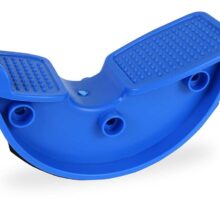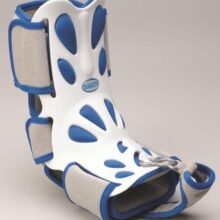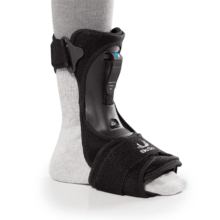Air Traveler
Login For Dealer Pricing
The Darco Air Traveler™ walker boot features a circumferential air bladder, an inflation/deflation system and a five way strapping system that offers the ideal balance between comfort and support. The low profile sole permits the patient to maintain a normal stride pattern while wearing the boot.









